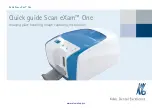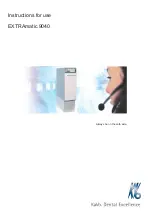
1-28
Section 1: Introduction
Start Here
Index
Contents
n
n
n
n
The matrix outputs feed these 11 destinations:
n
n
n
n
The DVE channel video inputs (a total of four if the optional second DVE
board is installed). These matrix outputs are routed through the optional
reTouch Color Correctors, if installed, before passing to the DVE channel
inputs.
n
n
n
n
The DVE channel texture inputs (a total of four if the optional second DVE
board is installed).
n
n
n
n
The Background Framestore.
n
n
n
n
The optional dual channel wide range Defocus module inputs.
DVE Paths
You can configure the DVE channels three ways: Video+Video, Video+Key, and
Video-Key+Shadow. This discussion includes a drawing for each mode.
Video+Video Mode
In the Video+Video mode, the DVE board acts as two
identical video-only DVE channels, each processing a full 4:2:2 video path.
Each channel has a video input and a texture source input with dedicated freeze
buffers. The texture inputs feed each channel's light source model, where the
textures are applied to the light source calculations. The video inputs feed the
border/crop processing, then pass to their respective light source models. Then
the light source, including texture, is applied to each image.
Each channel has its own independent transform controller, which generates
addressing for the main transform framestore and filter coefficients for the hori-
zontal and vertical bandwidth filters. The video for each channel is filtered and
then passed to the motion detection and vertical upsampling circuitry. From
here the video is written into the main transform framestores.





































